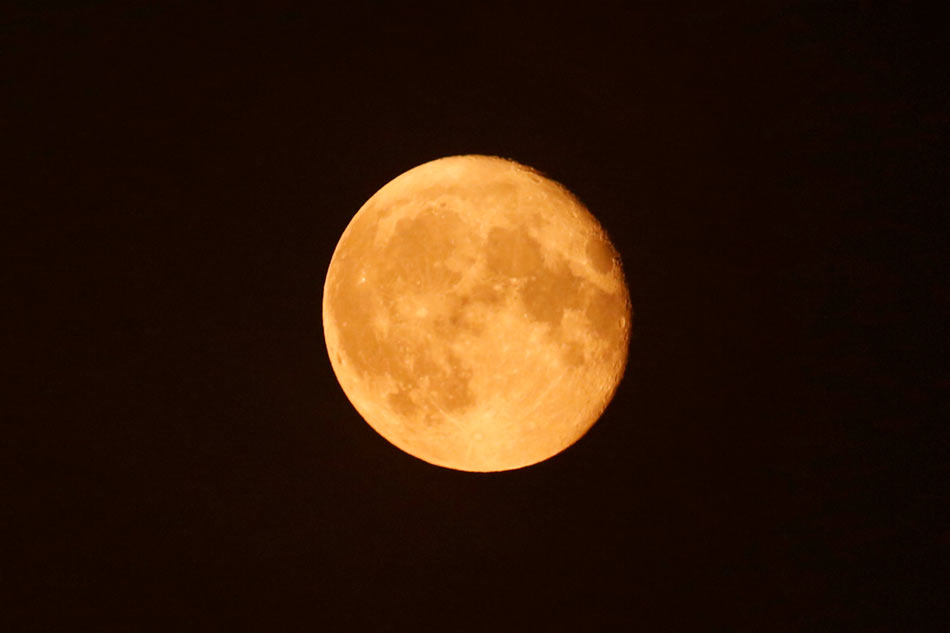Heads up: 'Supermoon' to appear on Monday | ABS-CBN
ADVERTISEMENT

Welcome, Kapamilya! We use cookies to improve your browsing experience. Continuing to use this site means you agree to our use of cookies. Tell me more!
Heads up: 'Supermoon' to appear on Monday
Heads up: 'Supermoon' to appear on Monday
ABS-CBN News
Published Nov 13, 2016 04:50 PM PHT
|
Updated Nov 14, 2016 10:37 AM PHT
MANILA -- On Monday, Filipinos can get a glimpse of the so-called "supermoon" as it reaches its closest point during its orbit around the Earth in 68 years.
MANILA -- On Monday, Filipinos can get a glimpse of the so-called "supermoon" as it reaches its closest point during its orbit around the Earth in 68 years.
According to state weather bureau PAGASA, the moon will reach the perigee or its closest point to Earth at 7:21 p.m., almost two hours and 31 minutes before going full moon at 9:52 p.m.
According to state weather bureau PAGASA, the moon will reach the perigee or its closest point to Earth at 7:21 p.m., almost two hours and 31 minutes before going full moon at 9:52 p.m.
This will be the closest perigee since January 26, 1948. The moon won’t be seen this close to Earth again until November 26, 2034.
This will be the closest perigee since January 26, 1948. The moon won’t be seen this close to Earth again until November 26, 2034.
"This year’s supermoon is one of the closest and biggest in 68 years and it won’t happen again until 2034," PAGASA said in its advisory.
"This year’s supermoon is one of the closest and biggest in 68 years and it won’t happen again until 2034," PAGASA said in its advisory.
ADVERTISEMENT
PAGASA explained that the "supermoon" is a modern astrological term coined by Richard Nole.
PAGASA explained that the "supermoon" is a modern astrological term coined by Richard Nole.
It is defined as “a new or full moon that occurs when the moon is within 90% of its closest approach to Earth in a given orbit" and is called a Perigee Full Moon, or one that is closer to Earth than average, in astronomy.
It is defined as “a new or full moon that occurs when the moon is within 90% of its closest approach to Earth in a given orbit" and is called a Perigee Full Moon, or one that is closer to Earth than average, in astronomy.
According to the National Aeronautics and Space Administration (NASA), a supermoon can be as much as 14 percent bigger and 30 percent brighter than an apogee full moon.
According to the National Aeronautics and Space Administration (NASA), a supermoon can be as much as 14 percent bigger and 30 percent brighter than an apogee full moon.
However, a 30 percent difference in brightness can easily be masked by clouds or the competing glare of urban lights.
However, a 30 percent difference in brightness can easily be masked by clouds or the competing glare of urban lights.
ADVERTISEMENT
ADVERTISEMENT



